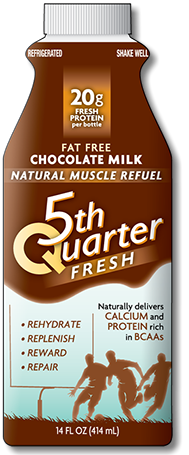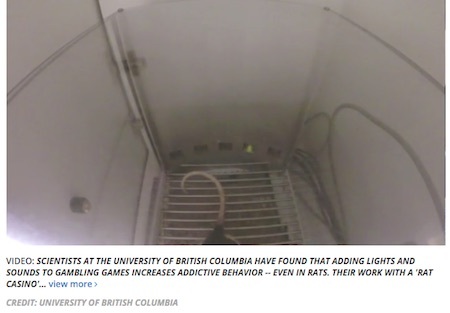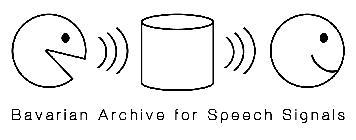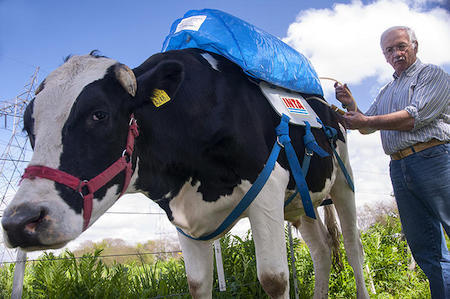Marc Abrahams's Blog, page 286
January 22, 2016
What makes a metaphor difficult to understand?
Here is an example of an easy metaphor: “My lawyer is a shark.”
Here is an example of a difficult metaphor: “Happiness is a ditch.”
Notwithstanding whether or not you have already given up trying to interpret the second one, the question may still be asked: “What makes a metaphor difficult to understand?” which is one of the metaphor-based discussions which can be found via the portal of www.metaphorik.de a forum for scientific exchange concerning questions about metaphor and metonymy. The examples above are provided by Emertius professor Walter Kintsch and Anita Rachelle Bowles of the Department of Psychology at the University of Colorado, US, who used Latent Semantic Analysis (LSA) in a 300-dimensional semantic space to analyse the results of metaphor-based experiments (of the form NOUN1 IS A NOUN2) with 24 undergraduate students.
“[…] metaphors that are judged to be easy to comprehend are interpreted in similar ways by most people, whereas a greater range of interpretations exists for difficult to comprehend metaphors. However, people agreed among each other to some extent, even when the metaphors they were asked to interpret appeared to be pure nonsense. Faced with the seemingly impossible task of finding an interpretation for such metaphors, people do not give up (a failure to respond was observed in only in 7% of the cases); instead they come up with something, and there is a certain consistency among people in how they respond.”
See: Metaphor comprehension: What makes a metaphor difficult to understand? (published in the journal Metaphor and Symbol, Volume 17, Issue 4, October 2002, pages 249-262)
Note: The diagram shows an LSA network of the metaphor ‘Happiness is gold’
Bonus task (optional) : Construct a metaphor (as hard as you like) taking the form NOUN1 IS A NOUN2 and post it as a comment below.

January 21, 2016
Podcast teasers: Egg sounds, Brussels sprout physics, praying injury, Kansas pancake
Here are four teasers — four favorite moments from recent Improbable Research podcasts.
Jean Berko Gleason — The disgusting sound of soft-boiled eggs (from podcast #40):
Melissa Franklin — Brussels sprouts in physics (from podcast #47):
Chris Cotsapis — Injuries caused by praying (from podcast #46):
Jean Berko Gleason — The flatness of Kansas and pancakes (from podcast #41):

How well does a rat simulate a human gambler?
 How well does a rat simulate a human gambler? Well enough to be the basis of science announcements. Those announcements come from a laboratory at the University of British Columbia. Here’s one of the announcements:
How well does a rat simulate a human gambler? Well enough to be the basis of science announcements. Those announcements come from a laboratory at the University of British Columbia. Here’s one of the announcements:
UBC Psychology Professor Catharine Winstanley [pictured here]’s one-of-a-kind approach to gambling addiction is a highlight of the Djavad Mowafaghian Centre for Brain Health, a major research and clinical facility at UBC….
One of the lab’s innovative studies, lead by PhD student Paul Cocker, created a “casino-like” slot machine, using flashing lights and sugar pellet rewards, to study behaviour in rats.
Her team discovered that a type of drug called D4 antagonists, which work by blocking a specific type of dopamine receptor in the brain, help animals recognize a ‘win’ versus a ‘loss’ on the rat slot machine. In other words, says Winstanley, “it makes them less vulnerable to what is called the ‘near miss effect’ — that feeling of being closer to a win when two out of three symbols match- which we know motivates continual engagement with the game.”
While still in a preliminary stage, the hope is that dopamine D4 antagonists will be a treatment avenue for treating gambling addictions in humans.
The lab’s newest publication is:
“Activation of dopamine D4 receptors within the anterior cingulate cortex enhances the erroneous expectation of reward on a rat slot machine task,” Cocker PJ, Hosking JG, Murch WS, Clark L, Winstanley CA.,
Neuropharmacology. 2016 Jan 14.
This is big news, as shown by many news reports. The Vancouver Sun‘s report carries the headline “Music, flashing lights encourage risky gambling in rats, UBC study“.
A press release issued by the university expressed the news with perhaps a hint of a soupçon of nuance: “Flashing lights and music turn rats into problem gamblers“. That press release includes a video of the rat casino in action. Here a screen capture from that video — note the flashing casino-style light and the tail of a rat:
(Thanks to Adam K. Olson for bringing this to our attention.)

Big Man | Big Mouth (new study)
 Would you say that having a big mouth might be a valid cue to leadership selection and success? A new (March 2016) study in the Journal of Experimental Social Psychology authored by Dr. Daniel E. Re and Professor Nicholas O. Rule of the Social Perception and Cognition Lab, University of Toronto, Canada, suggests that the answer could be yes. Having noted that mouth-width “correlates with the propensity for physical combat in primates” they embarked on a three-part experimental study (in which the primates under investigation were human). Experiment 3, for example, assessed how CEOs’ mouth-widths related to their companies’ profits.
Would you say that having a big mouth might be a valid cue to leadership selection and success? A new (March 2016) study in the Journal of Experimental Social Psychology authored by Dr. Daniel E. Re and Professor Nicholas O. Rule of the Social Perception and Cognition Lab, University of Toronto, Canada, suggests that the answer could be yes. Having noted that mouth-width “correlates with the propensity for physical combat in primates” they embarked on a three-part experimental study (in which the primates under investigation were human). Experiment 3, for example, assessed how CEOs’ mouth-widths related to their companies’ profits.
“[…] we observed that mouth width correlated with judgments of CEOs’ leadership ability and with a measure of their actual leadership success.”
The authors alert us to the possibility that big mouths could not only be a significant factor in business-world success, but also in politics.
Photo above: via Wikipedia

January 20, 2016
I do not understand, and have something to say [Podcast 47]
Things that disappear inside small boys; a tall space with a big bottom; something that one particular person does NOT understand; and the ambiguity of Brussels sprouts — these things both turn up in this week’s Improbable Research podcast.
SUBSCRIBE on Play.it, iTunes, or Spotify to get a new episode every week, free.
This week, Marc Abrahams —with dramatic readings by Melissa Franklin — tells about:
Disappearance of things inside boys — “Gastric Disappearance of Dietary Fiber by Adolescent Boys,” S. Gramstorff Fetzer, C. Kies, and H.M. Fox, Cereal Chemistry, vol. 56, 1979, p. 34.
A tall space, with a small bottom — “A Tall Space With a Small Bottom,” István Juhász, Saharon Shelah, Lajos Soukup, and Zoltán Szentmikl Ossy, Proceedings of the American Mathematical Society, vol. 131, no. 6, 2003, pp. 1907-16.
Something that one particular person does NOT understand — “On What I Do Not Understand (and Have Something to Say), Part I,” Saharon Shelah, Fundamenta Mathematicae, vol. 166, nos. 1-2, 2000, pp. 1-82.
The ambiguity of Brussels sprouts — “Brussels Sprouts: An Exceptionally Rich Source of Ambiguity for Anticancer Strategies,” M. Paolini, Toxicology and Applied Pharmacology, vol. 152, no. 2, October 1998, pp. 293-4.
The mysterious John Schedler or the shadowy Bruce Petschek perhaps did the sound engineering this week.
The Improbable Research podcast is all about research that makes people LAUGH, then THINK — real research, about anything and everything, from everywhere —research that may be good or bad, important or trivial, valuable or worthless. CBS distributes it, on the CBS Play.it web site, and on iTunes and Spotify).

January 19, 2016
The first public corpus of alcoholized German speech
Collectors of alcoholized German speech, rejoice! A new corpus is available to you:
“Alcohol Language Corpus. The first public corpus of alcoholized German speech,” Florian Schiel [pictured here], Christian Heinrich, and , Language Resources and Evaluation, 2011. The authors, at the Bavarian Archive for Speech Signals, Ludwig-Maximilians-Universität München, explain:
“The Alcohol Language Corpus (ALC) is the first publicly available speech corpus comprising intoxicated and sober speech of 162 female and male German speakers. Recordings are done in the automotive environment to allow for the development of automatic alcohol detection and to ensure a consistent acoustic environment for the alcoholized and the sober recording. The recorded speech covers a variety of contents and speech styles. Breath and blood alcohol concentration measurements are provided for all speakers…. ALC is available without restriction for scientific or commercial use at the Bavarian Archive for Speech Signals….
The number of word tokens in the sub-group spontaneous speech reveals that in average speakers utter more words per recording item in sober condition than being intoxicated… The reverse effect can be observed in the sub-category command & control, in which the speakers were asked to read or formulate commands to the automobile… this is not what we expected to see, since the higher mental load required to think of new commands was expected to be diminished under the influence of alcohol and hence the number of words to be less than in the sober state.”
(Thanks to investigator Bette Dalkey for bringing this to our attention.)
BONUS: Baumeister B, Schiel F (2010): On the Effect of Alcoholisation on Fundamental Frequency. IAFPA Annual Conference 2010, Trier, Germany.

January 18, 2016
The Museum of Sex’s curator has written a book
 Sarah Forbes has written a book about her experiences as curator of The Museum of Sex.
Sarah Forbes has written a book about her experiences as curator of The Museum of Sex.
We have enjoyed our experiences collaborating with the curator, on the case of the homosexual necrophiliac duck, the case of the Blonsky device for using centrifugal force to assist women in giving birth, and on other endeavors.
Forbes’s book is called Sex in the Museum: My Unlikely Career at New York’s Most Provocative Museum. We eagerly await the official publication day, April 5.
Heather Wood Rudolph has collaborated with curator Forbes in previewing the book, in an article in Cosmopolitan magazine called “Get That Life: How I Became the Curator at the Museum of Sex.”

Dangerous smells (boxing study)
“Sixteen healthy male participants donated their body odor while engaging in a boxing session […]”
 An unusual occurrence perhaps, but less so if you were organising an experiment to investigate whether the body odor of a stranger with the intention to harm serves as a chemosignal of aggression.
An unusual occurrence perhaps, but less so if you were organising an experiment to investigate whether the body odor of a stranger with the intention to harm serves as a chemosignal of aggression.
see: ‘You Smell Dangerous: Communicating Fight Responses Through Human Chemosignals of Aggression‘ in: Chemical Senses (2016) 41 (1): 35-43.
Question [optional]. How would you go about collecting body odor during a boxing bout? [substantial help with answers may be found here]
The photo shows lead author Smiljana Mutic of Uniklinik RWTH Aachen, Germany.

January 17, 2016
Cow gas-extraction for automobile propulsion project
The cow-centric project, as reported by Ben Schiller for Fast Company, is as much performance art as state-of-the-art technology performance:
“Each cow apparently passes enough gas to power a car or a fridge. Imagine the possibilities…. The project from Argentina’s National Institute of Agricultural Technology is only a proof-of-concept at this stage. But it is intriguing. Researchers put plastic backpacks on cows, then inserted tubes into their rumens (their biggest digestive tract). They extracted the methane—about 300 liters a day. That’s enough to run a car, or a fridge for 24 hours.”

January 16, 2016
Certain people would really like you to really like certain chocolate milk
 Some people are working to persuade you to really like some chocolate milk — a particular brand of chocolate milk. Some other people — many of them doctors and scientists and journalists who write about medicine and science — are working to make you think about whether you should or should not like that particular brand of milk, and whether you should find the Official Story of that milk to be laughable.
Some people are working to persuade you to really like some chocolate milk — a particular brand of chocolate milk. Some other people — many of them doctors and scientists and journalists who write about medicine and science — are working to make you think about whether you should or should not like that particular brand of milk, and whether you should find the Official Story of that milk to be laughable.
Julia Belluz, writing in Vox, tells about it:
The incredible tale of irresponsible chocolate milk research at the University of Maryland
Academic press offices are known to overhype their own research. But the University of Maryland recently took this to appalling new heights — trumpeting an incredibly shoddy study on chocolate milk and concussions that happened to benefit a corporate partner.
It’s a cautionary tale of just how badly science can go awry as universities increasingly partner with corporations to conduct research.
The story started when the University of Maryland issued a press release about a new study on the effects of a single brand of chocolate milk on cognitive and motor skill tests in high school athletes….

Marc Abrahams's Blog
- Marc Abrahams's profile
- 14 followers








